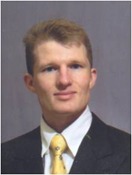An Approach to Convert Dose Quantities From CT- and CBCT-Imaging
M Borowski1*, L Pirl1, S Ketelhut2, M Kuhlmann2, L Bueermann2, (1) Klinikum Braunschweig, Braunschweig, DE, (2) Physikalisch-Technische Bundesanstalt, Braunschweig, DE
Presentations
PO-GePV-I-6 (Sunday, 7/10/2022) [Eastern Time (GMT-4)]
ePoster Forums
Purpose: To develop a concept to convert dose quantities from CT- and CBCT-imaging and thus enable a comparison of patient exposure from 3D-imaging from both modality types.
Methods: DLP-measurements for head- and trunk-protocols were performed with three-fold CTDI head- and body-phantoms, using a 300 mm pencil-type chamber and a farmer-type chamber on 15 CBCT-systems, covering multiple typical system designs and compared to the DAP reported by the systems. Due to the limited field of view on CBCT-units, a dedicated setup for measurements using the CTDI body-phantom was developed and applied. Vice versa, DAP was quantified with a dedicated setup on two CT-units and related to the reported DLP. Supporting measurements of DAP-chamber calibration, HVL of the X-ray spectra and field collimation were performed. Measurements were extended by MC-simulations using the software ImpactMC. Conversion factors between DLP and DAP were determined and normalized to standard field extensions. The application of the conversion factors on DRL was tested.
Results: Average conversion factors from DLP to DAP were determined as 23.6 cm and 50.5 cm, respectively, for the CTDI head- and body-phantom. For the head-phantom an HVL-dependence is observed, following our theoretical prediction. While most CBCT-units follow the prediction, some show clear type-specific deviations. For nearly all units, conversion factors lie within 20 % from the average values. An application of the conversion factors to harmonize DRL from CT- and CBCT-imaging seems possible, but it is recommended to consider type specific features in addition. Simulation data support and extend the measurement results.
Conclusion: A concept to convert dose quantities from CT- and CBCT-imaging was developed and tested on a representative sample of CBCT-units. Average conversion factors for head- and trunk-imaging were determined. Based on our results a comparison and optimization of patient exposure in CT- and CBCT-imaging seems possible.
Funding Support, Disclosures, and Conflict of Interest: The study was supported by German Federal Office for Radiation Protection (BfS) under research project Nr 3619S42462
Keywords
Taxonomy
IM- Cone Beam CT: Radiation dosimetry & risk
Contact Email



